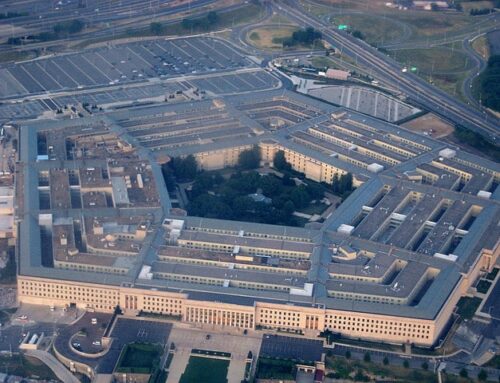Cast your mind back to the distant past – three weeks ago – when Senate Republicans drafted a bill they call the “Health, Economic Assistance Liability Protection and Schools Act,” or HEALS Act for short. This was a volley in the intramural Capitol Hill tennis match of negotiations on the next round of relief legislation in response to the COVID-19 pandemic.
We rolled up our sleeves and started reading the 721-page bill. We also devoted a previous Weekly Wastebasket to our concerns about this massive bill.
One of the things we pointed out was roughly $11 billion in Defense Industrial Base Resiliency Funds. These funds, plus another $8 billion+ in procurement spending would be on top of roughly $700 billion of Fiscal Year 2020 money the Pentagon is currently spending – but we digress. And that’s just the portion of additional funding for the Pentagon that would go directly to the “industrial base.”
As we noted at the time, the proposed General Provisions language to govern the obligation of $11 billion in your tax dollars is astonishingly brief, “For expenses of modifications of the terms and conditions of contracts and agreements as authorized in Section 3610 of Division A of Public Law 116-136.” This boils down to spending $11 billion to modify contracts as anticipated by the CARES Act just a few months ago.
Some background on Section 3610: it was included to allow employees of all government contractors (not just those on Pentagon contracts) who have critical skills to remain on the payroll even if they work in a federal facility that closed due to the pandemic.
As far as is known publicly, only the Department of Defense has declared a need to seek additional funding to reimburse its contractors.
An undated memorandum, with no letterhead but evidently from the Department of Defense Comptroller, states:
“The Acquisition Program Impact Penalty cost is an estimate of the program costs (sic) increases realized because of inefficiencies caused by COVID-19. This document covers expected cost (sic) incurred between March 15, 2020 and June 15, 2020. …
“The Department closely monitors and tracks approximately 22,000 critical contractors who are most important to modernization and readiness. As of July 8, 2020, 977 of DoD’s suppliers have closed since March 15, 2020. The average closure is over two weeks. 943 have reopened with 34 still closed.”
So, the Department of Defense is asking for just a smidge under $11 billion to cover contract modifications that may have occurred due to contractor closures in just a three-month period.
Senator Richard Durbin (D-IL) (senior Democrat on the Defense Appropriations Subcommittee) and House Armed Services Committee Chairman Adam Smith (D-WA) co-authored an opinion piece on this issue. They point out that no other federal department seems to have requested additional funds in support of its contractors. “Why are other federal agencies finding money in their regular budget to pay for their 3610 contractor pay claims, but the Pentagon cannot?”
Given the massive size of the Pentagon budget, by far the largest in terms of discretionary spending, why can’t Department of Defense officials find money in their existing Fiscal Year 2020 coffers to cover these expenses? Additionally, not all contract woes can be solved by giving the contractors more money. (Heresy, we know!) Wouldn’t many of the problems encountered by short-term facility closures be better solved by amending the amount of time the contractor has to finish the task?
This is one more example of the Department of Defense being given a special, exalted status when it comes to budget issues. We believe that strenuous Congressional oversight is needed prior to handing Pentagon contractors another $11 billion. Actually we believe the Pentagon should go pound sand. Be treated, as Senator Durbin and Rep. Smith suggest above, like every other federal department working with contractors: take it out of hide. Sauce for the goose; sauce for the gander.











Get Social